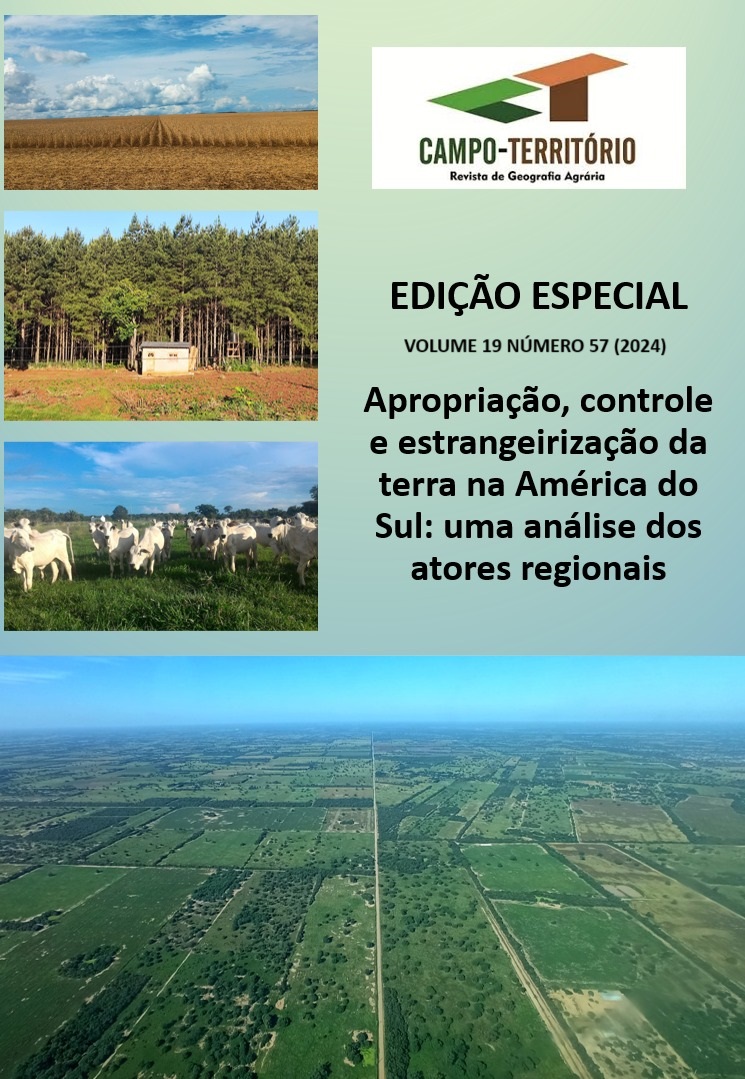The conquest of the Chaco
strategies and temporalities of Uruguayan capitals in Paraguay
DOI:
https://doi.org/10.14393/RCT195774754Keywords:
South America, land grabbing, commodities frontier, foreignisation, livestock farmingAbstract
At the beggining of the 21st century, South American agriculture underwent profound transformations driven by the expansion of the so-called agribusiness model. This implied the deployment of a globalizing logic in the agriculture of the South, with a special role of foreign capitals in what is known as land grabbing. Among others, regional capitals led the expansion of crops such as soybeans and livestock into ecosystems with little anthropization, such as the Amazon, the Cerrado, and the Gran Chaco. In the Paraguayan Chaco, the expansion of Uruguayan capital in land purchase and cattle production has been reported. In dialogue with contemporary debates on capital and commodity frontier expansion, this article seeks to understand: (i) the reasons that make the Paraguayan Chaco an attractive destination for regional investments and (ii) the factors that boosted the expansion of Uruguayan capital in this area. The analysis offers a reconstruction of three temporalities in which differential strategies adopted by Uruguayan capitalists can be distinguished, reflecting changes in the business context at both regional and national levels. Additionally, the study highlights that this process results from the combination of factors such as the expansion of agribusiness, the rise in land prices and the occupation of the agricultural frontier in Uruguay; the commodity frontier status of the Chaco; policies favorable to foreign investment in Paraguay; and the trade, social, and business links between the cattle-raising elites of both countries.
Downloads
Downloads
Published
How to Cite
Issue
Section
License
Copyright (c) 2024 Revista Campo-Território

This work is licensed under a Creative Commons Attribution-NonCommercial-NoDerivatives 4.0 International License.































